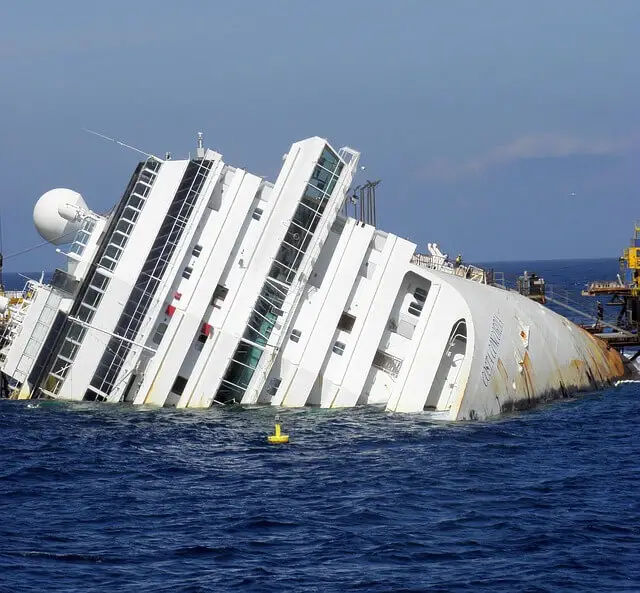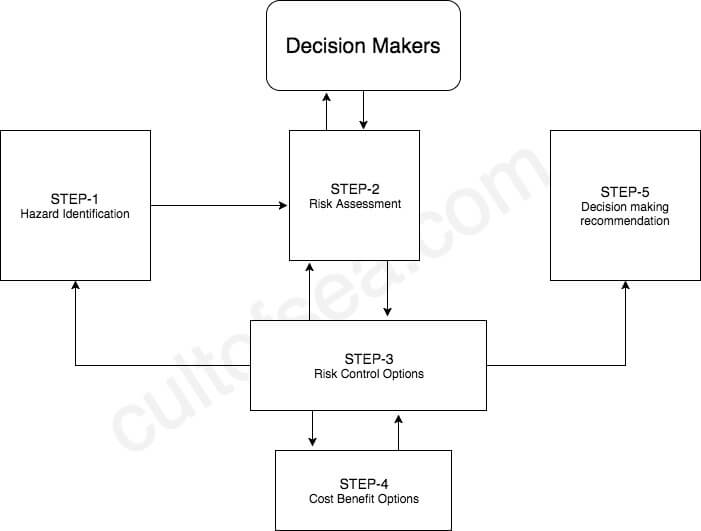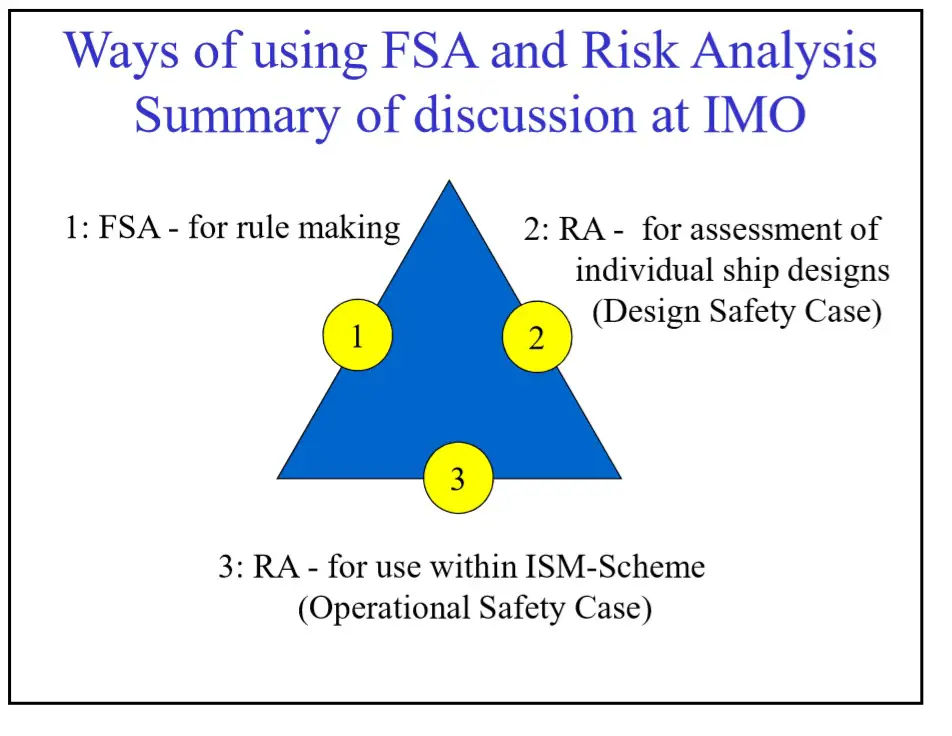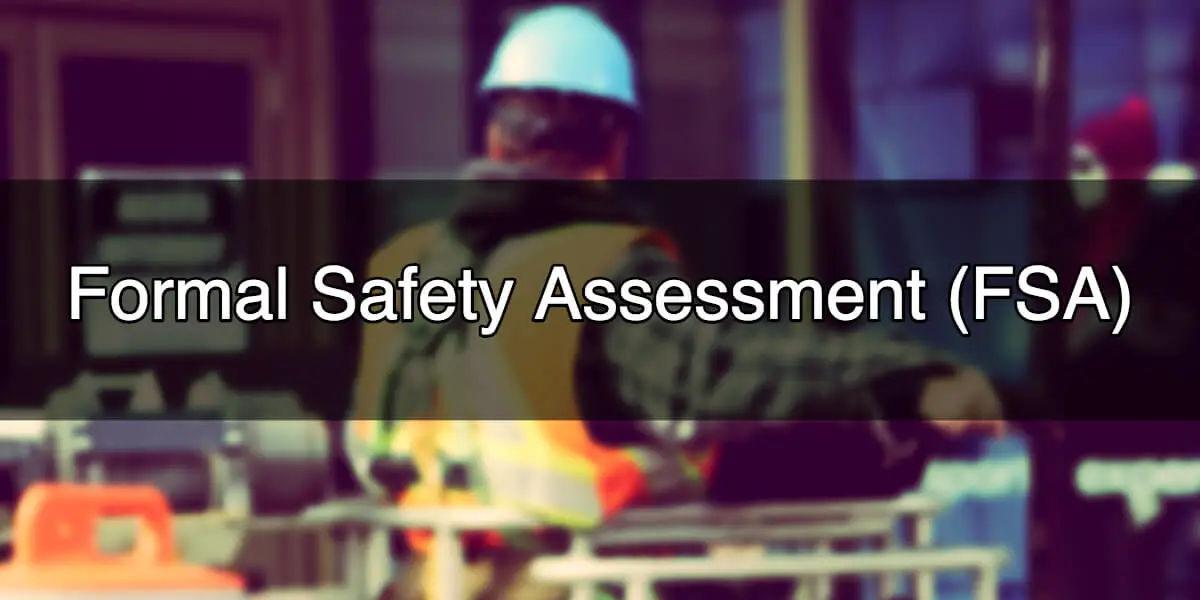Historic Background for FSA
- Nuclear Industry in the 60s: Probabilistic Safety Assessments
- Chemical Industry in the 70s: QRA, Seveso Directive I and II
- Offshore Industry in the 80s: QRA, Industrial Self Regulation Regime in Norway, Safety Case Regime in UK
- Shipping Industry in the 90s: FSA
- 1992: UK House of Lords, Lord Carver Report 1993,
- MSC 62: UK proposes FSA concept 1997,
- MSC 68: FSA Interim Guidelines 2001,
- MSC 74: FSA Guidelines
Definition
Formal Safety Assessment or FSA is a structured and a systematic methodology aimed at enhancing Maritime Safety including protection of life, health, marine environment and property by using risk analysis and cost-benefit assessment.
Purpose
FSA can be used as a tool to help in the evaluation of new regulations for Maritime safety and protection of the marine environment or in making a comparison in existing and possibly improved regulations with a view to achieving a balance between the various technical and operational issues, including the human element, and between maritime safety or protection of the marine environment and costs.
FSA is a rational and systematic process for assessing the risks associated with shipping activity and for evaluating the costs and benefits of options for reducing these risks. Application of FSA may be particularly relevant for proposals for rules and regulatory measures which have far-reaching implications in terms of costs to the maritime industry or the administrative or legislative possible burdens. This is achieved by providing a clear justification for proposed measures and allowing the comparison of different options for such measures to be made. This is in line with the basic philosophy of FSA as it can be used as a tool to facilitate a clear decision-making process. In addition, it provides a means of proactivity, enabling potential hazards to be considered before a serious accident occurs.

Ship Sinking – For Illustration Purposes only
Difference between FSA and current regulatory safety assessment approach:
| Formal Safety Assessment | Current Approach | ||
| Step 1 | What might go wrong? | Hazard identification | What did go wrong? |
| Step 2 | How often, how likely? How bad? | Risk Analysis Frequencies, probabilities Consequences Risk = probability x consequence | |
| Step 3 | How can matters be improved? | Risk control options identification | How can matters be improved? |
| Step 4 | How much? How much better? | Cost-benefit evaluation | |
| Step 5 | What actions are worthwhile to take? | Recommendations | What actions are worthwhile to take |
FSA is consistent with the current IMO decision-making process and should comprise as follows:
- Identification of Hazard
- Risk analysis
- Risk control options
- Cost-benefit assessment
- Recommendation for decision-making
Step 1 – Identification of hazards
- Identify hazards that might cause accidents
- Take full account of the human element
- Develop accident scenarios and outcomes arising from identified hazards
- Rank and screens the accident scenarios and Hazards.
Step 2 – Risk Analysis
- Focus on the important scenarios from step one
- Quantifies the risk of each occasion
- Analyses where the risks arise from
- Focuses attention on principle underlying causes
- Identify significant factors which influence the level of risk.
Step 3 – Risk Contol Options
- Focuses attention on factors contributing to high risk
- Identifies measures to control risk
- Evaluates anticipated reduction in risk by implementing these measures.
Step 4 – Cost Benefit Assessment
- It determines the cost and benefit for each risk control option
- It compares the cost effectiveness of these risks control options
- Types of costs, e.g.: investment costs, costs related to operation, costs related to training, inspection, maintenance.
- Types of benefits, e.g.: reduced fatalities/injuries, reduced loss of properties, damage to the environment.
Step 5 – Recommendations for design making
- Considers the affected stakeholders and effect of proposed options on them, based on the implementation of hazards, risk options, cost and benefit.
- Assists the selection of regulatory options
- Makes recommendations to decision-makers.
- Providing a selection of risk control options, which are
- cost effective and
- reduce risk as low as is reasonably practicable
- Preparation of a report,
- presenting the scope of the analysis,
- any limitations and assumptions made,
- the results achieved,
- providing a clear explanation of the reasoning behind the conclusions made.
- Recommendation of risk control options to the decision maker for further consideration.

Using the information provided by the FSA process, the decision makers decide. FSA does not supplant or undermine the decision making role but provides a reliable information to assist decision-making.
Formal safety assessment is one way of ensuring action is taken before a disaster occurs. It was originally developed on account of Piper Alpha disaster when off-shore platform exploded at sea costing 167 lives.

FSA Criticism
- FSA takes too much time – (while public pressure calls for fast solutions)
- FSA used to slow down decision processes
- FSA can be a manipulative tool
- Cost data are too fluctuating in time and variable geographically
Current Status
- FSA approach has been agreed amongst those involved, maybe diverging understanding amongst others
- The Guidelines for Formal Safety Assessment (FSA) for use in the IMO rule-making process were approved in 2002 (MSC/Circ.1023/MEPC/Circ.392). The Guidelines have since been amended by MSC/Circ.1180MEPC/Circ.474 and MSC-MEPC.2/Circ.5. The amendments include revisions to section 3 Methodology
- The MSC agreed to establish a Correspondence Group & an FSA Group of Experts
- One area where FSA is already being applied is bulk carrier safety
Summary
FSA represents a fundamental change from what was previously a largely piecemeal and reactive regulatory approach to one which is proactive, integrated, and above all based on risk evaluation and management in a transparent and justifiable manner thereby encouraging greater compliance with the maritime regulatory framework, in turn leading to improved safety and environmental protection.
FSA is highly technical and complex. But it does offer a way forward and a means of escaping from the dilemma of the past in which action was too often put off until something went wrong with the result that the actions are taken often owed more to public opinion and political considerations than they did to technical merit.

Leave a Reply